Paris Map With Zones: An Expert's Guide to Navigating the City's Districts
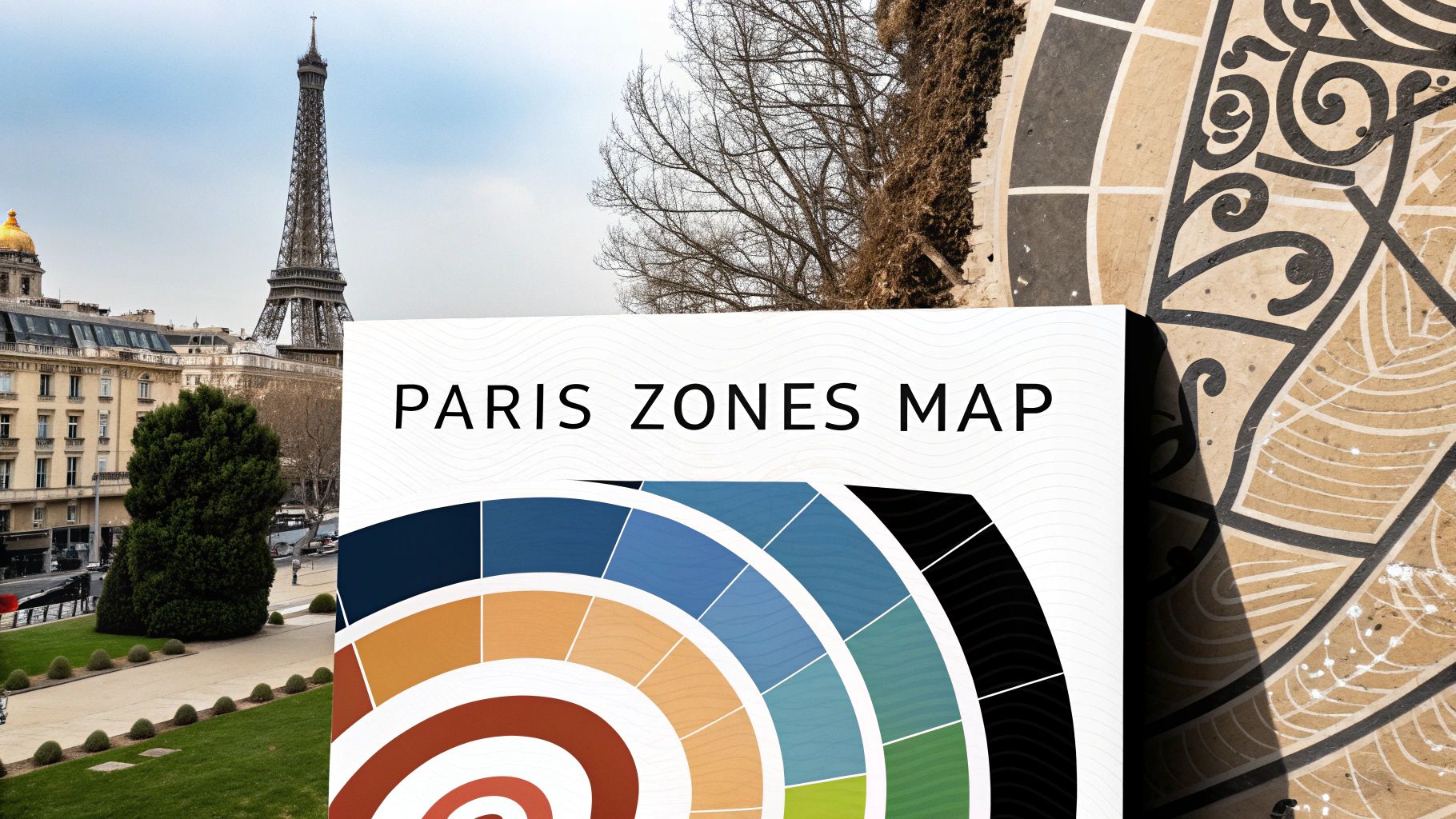
Understanding the Spiral: How Paris Zones Shape Your Experience
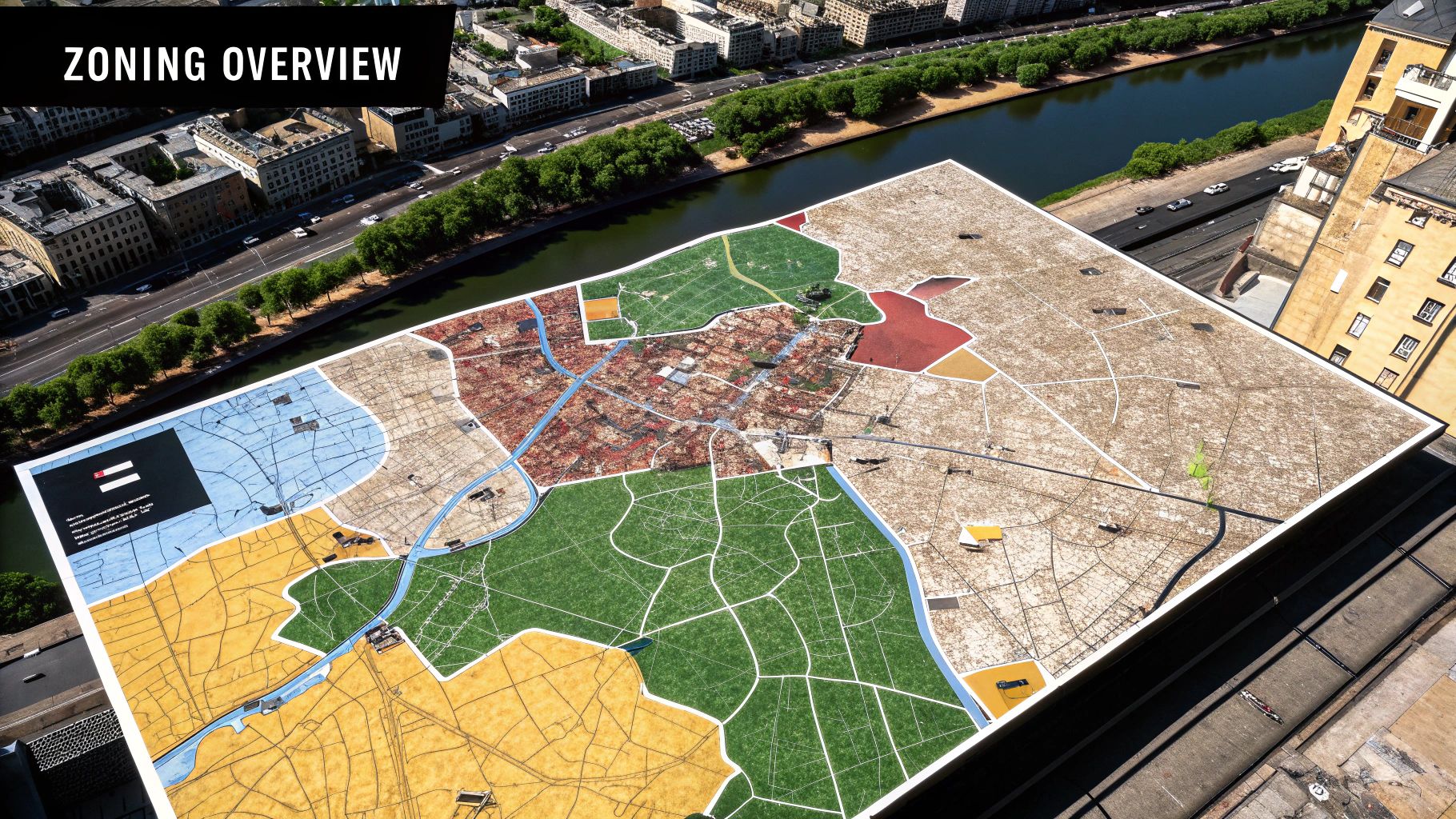
With over two milion residents, Paris uses a uniqe organizatonal system - 20 distinct districs called arrondissemnts that spirral outward from the city center like a snail shel. This thougtful arrangemnt does more than just divide up the city. It shapes how both visitors and locals experiance Paris, from finding their way arround to discovering each neighboorhood's distinct caracter.
Decoding the Arrondissement System
Each arrondissement functions almost like its own small city within Paris, complete with a local mayor and distinct personality. When Parisians refer to "the 1st" or "the 5th," they're tapping into an understanding of what makes each district special. The 1st arrondissement, for instance, contains iconic sites like the Louvre Museum and Tuileries Garden. Head up to the 18th and you'll find the stunning Sacré-Cœur Basilica overlooking the city from Montmartre. Simply knowing an arrondissement number tells you both where you are and what kind of atmosphere to expect.
Navigating the Spiral in Practice
The spiral layout creates a practical framework for exploring Paris. Generally, the lower the arrondissement number, the closer you are to the historic city center. Neighboring districts often share similar features, which makes planning routes more intuitive. For example, you can easily combine visits to the scholarly Latin Quarter in the 5th arrondissement with the elegant Saint-Germain-des-Prés area in the 6th, since they sit right next to each other.
From Historical Necessity to Modern Convenience
The spiral arrangement wasn't always part of Paris - it evolved as the city grew and needed better organization. What started as an administrative solution has become an essential tool for understanding modern Paris. Like branches of a family tree, once you grasp how the districts connect, the whole city makes more sense. This is especially helpful given that greater Paris now covers over 2,800 square kilometers. For more detailed guidance, check out: How to master Paris Districts.
Insider Tips for Using the Zones
Parisians use the arrondissement system naturally in daily life, often setting meeting points by simply mentioning a district number. Saying "I'm near the 10th" immediately gives a clear location. The system also helps with using public transit, since many metro and bus routes follow district boundaries. Once you understand how the zones work, what might seem like an overwhelming city becomes much easier to navigate and enjoy.
Historic Heart: Mastering Central Paris (Arrondissements 1-8)
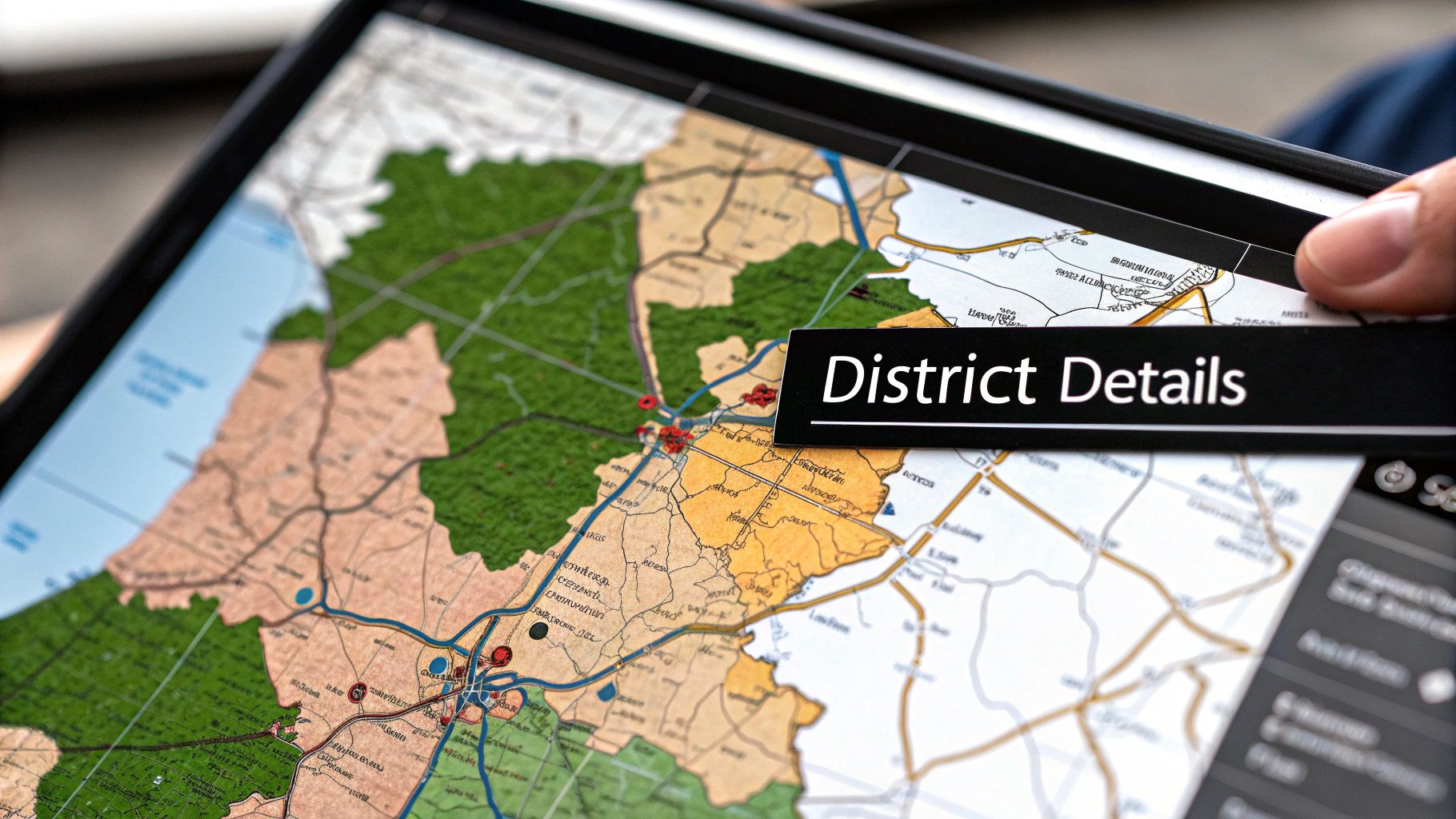
Understanding the spiral pattern of Paris's arrondissements makes exploring the city's historic center much simpler. The central districts, numbered 1 through 8, blend centuries of history with modern Parisian life. Each arrondissement has its own distinct personality and highlights, from world-famous museums to hidden neighborhood gems. Let's explore what makes each of these central districts special and worth discovering.
The Louvre and Beyond: Exploring the 1st Arrondissement
The 1st arrondissement on the Right Bank serves as Paris's historic core. While most visitors know it for the Louvre Museum, with its iconic glass pyramid and priceless artworks, this district offers much more to discover. Take a stroll through the Galerie Vivienne, where 19th-century mosaic floors and elegant iron-and-glass architecture transport you to Paris's golden age. This district perfectly captures both grand monuments and intimate Parisian street life.
The Marais: Unveiling the 3rd and 4th Arrondissements
The Marais district spans the 3rd and 4th arrondissements, offering a fascinating mix of old and new Paris. Medieval buildings house fashion boutiques, while historic Jewish bakeries sit alongside contemporary art galleries. The Place des Vosges stands out as a highlight - this perfectly symmetrical square surrounded by stunning 17th-century mansions provides a peaceful retreat. The area's diverse character makes it appealing for everyone from history buffs to fashion lovers.
The Latin Quarter and Saint-Germain-des-Prés: Literary and Philosophical Hubs (5th and 6th)
Cross the Seine to find the intellectual heart of Paris in the 5th and 6th arrondissements. The Latin Quarter centers around the historic Sorbonne University, which has shaped the neighborhood's scholarly atmosphere since the 1200s. Next door, Saint-Germain-des-Prés once hosted famous writers and philosophers in its cafes. Today, the area maintains its intellectual spirit while adding upscale shopping and dining options.
Elegance and Power: The 7th and 8th Arrondissements
The western districts showcase Paris at its most grand. The 7th arrondissement features both the Eiffel Tower and the Musée d'Orsay, offering iconic views and impressionist masterpieces. In the 8th, the Champs-Élysées stretches from luxury boutiques to the Arc de Triomphe, while the French President's residence at the Élysée Palace represents political power. These neighborhoods let visitors experience the city's most elegant side.
Getting to know each central arrondissement's character helps create a richer Paris experience. Whether you're interested in art museums, historic architecture, café culture, or simply soaking in authentic Parisian life, understanding these districts helps you make the most of your time in the city's historic heart.
Cultural Quarters: Exploring the Inner Ring (Arrondissements 9-15)
Beyond the bustling center of Paris lies a fascinating ring of neighborhoods - arrondissements 9 through 15 - where historical character meets everyday Parisian life. These districts showcase the city's authentic spirit, offering visitors a chance to experience Paris beyond the typical tourist spots. Let's explore what makes each area unique and worth discovering.
The Opera Garnier and Grands Boulevards: Unveiling the 9th Arrondissement
At the heart of the 9th sits the stunning Opera Garnier, setting the tone for this theatrical district. While shoppers flock to the famous department stores Galeries Lafayette and Printemps, the real magic happens in the quiet backstreets. Here, century-old covered passages tell stories of Paris's past, creating an interesting contrast between commercial grandeur and intimate historical spaces.
Canal Saint-Martin and Belleville: Exploring the 10th and 11th Arrondissements
The 10th and 11th arrondissements pulse with creative energy. Along the Canal Saint-Martin, locals gather at waterside cafes while artists and musicians bring life to the streets. The 11th has grown from its working-class roots into a cultural hotspot, filled with independent shops, galleries, and some of the city's best nightlife spots. These neighborhoods show how Paris continues to grow and change while keeping its distinct character.
Nation and Picpus Cemetery: Discovering the 12th Arrondissement
The 12th arrondissement balances urban life with peaceful spaces. Place de la Nation serves as its central hub, while the vast Bois de Vincennes park offers a natural escape from city life. History buffs find meaning at Picpus Cemetery, where French Revolution victims rest. This mix of daily life, nature, and history gives the 12th its special appeal.
The Gobelins Tapestry Manufactory and Chinatown: Contrasts in the 13th Arrondissement
In the 13th, old meets new in surprising ways. The historic Gobelins Tapestry Manufactory maintains centuries-old craft traditions, while nearby, the streets of Chinatown buzz with Asian restaurants and shops. This blend of French heritage and multicultural energy makes the 13th particularly interesting to explore.
Montparnasse Cemetery and Parks: The 14th Arrondissement
The 14th arrondissement offers quiet reflection among its tree-lined streets. Montparnasse Cemetery holds the graves of many famous artists and writers, while scattered parks provide peaceful spots to rest. Artist studios and workshops keep the area's creative spirit alive, making it perfect for those seeking a more thoughtful Paris experience.
The Village Charm of the 15th Arrondissement
Life in the 15th moves at a different pace. This Left Bank district feels like a village within the city, with its neighborhood markets, family parks, and residential streets. While tourists rarely venture here, the 15th shows how many Parisians really live. You might be interested in: How to master a one-day trip to Paris.
Each of these districts adds its own flavor to Paris's rich cultural mix. From grand boulevards to hidden passages, from ancient crafts to modern art scenes, the inner ring arrondissements reveal Paris in all its complexity. A good map helps unlock these neighborhoods' secrets, leading visitors to experiences they might otherwise miss.
Modern Edge: Discovering Outer Paris (Arrondissements 16-20)
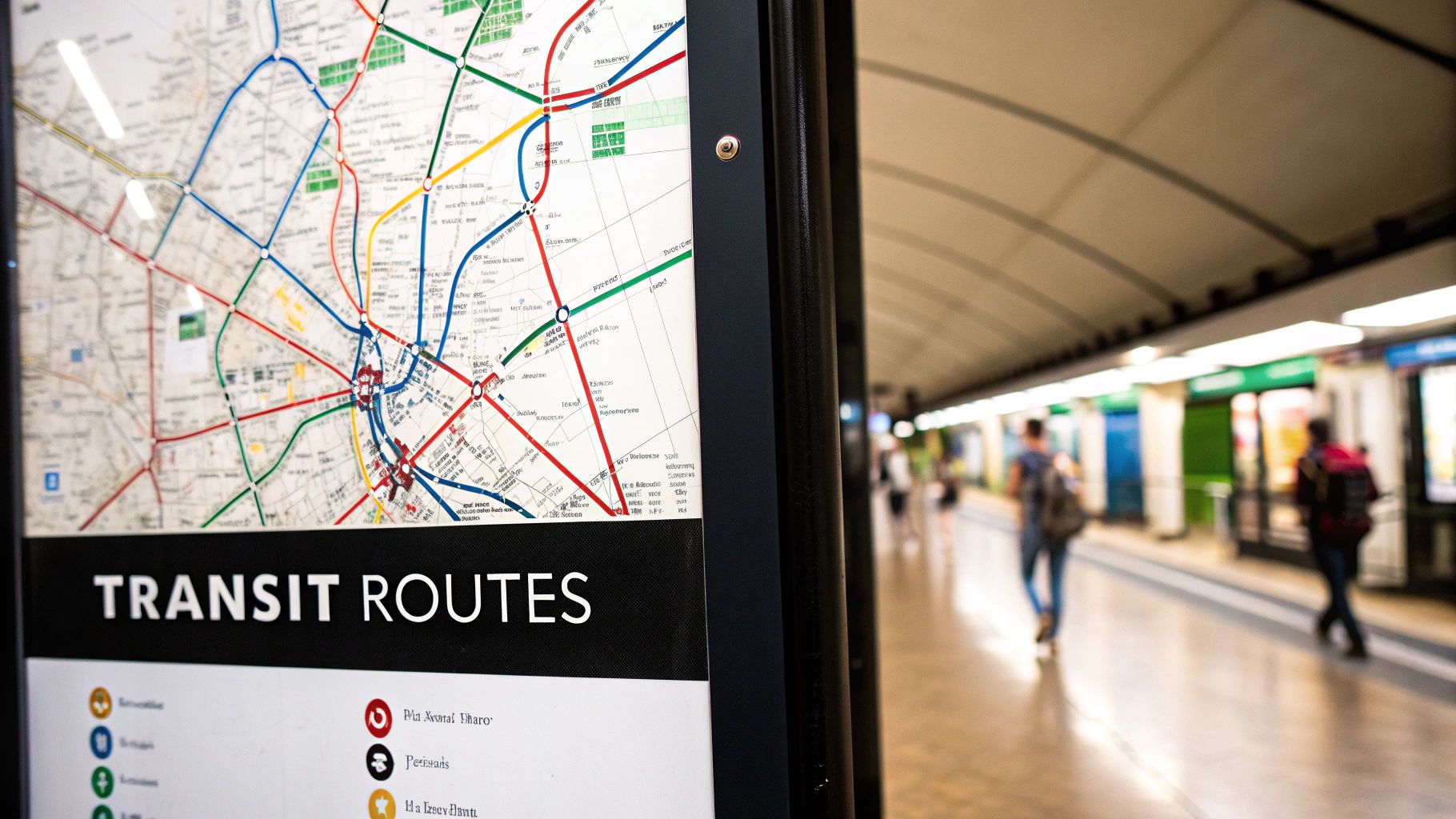
Beyond the popular tourist areas, Paris's outer districts (16th through 20th arrondissements) reveal a different side of the city. Here you'll find peaceful residential neighborhoods, thriving arts scenes, and expansive parks that locals treasure. These areas give visitors an authentic glimpse into daily Parisian life that most tourists miss. Having a map of Paris's zones is essential for exploring these lesser-known but rewarding districts.
The 16th: Elegance and Grandeur
The 16th arrondissement exemplifies refined Parisian living. Wide, tree-lined avenues feature impressive Haussmann buildings and high-end boutiques. Yet this sophisticated district also offers peaceful retreats - the sprawling Bois de Boulogne park provides a natural escape from city life. This mix of urban refinement and green spaces makes the 16th uniquely appealing to both residents and visitors seeking Paris's more tranquil side.
The 17th: A Mix of Styles
North of the 16th, the 17th arrondissement presents an intriguing blend of old and new Paris. The charming market streets of Batignolles maintain their village-like atmosphere, while areas near Place des Ternes showcase more contemporary developments. Walking through the 17th reveals how Paris continues to evolve while preserving its historic character.
The 18th: Montmartre and Beyond
While Montmartre and the stunning Sacré-Cœur Basilica draw crowds to the 18th arrondissement, there's much more to discover here. The multicultural Goutte d'Or neighborhood bustles with market activity and diverse communities. For example, rue Dejean's African market offers a vibrant shopping experience far removed from typical tourist attractions. A detailed zone map helps visitors explore these distinct areas within the expansive 18th.
The 19th: Parks and Canals
The 19th arrondissement stands out for its abundance of outdoor spaces. At its heart, the Parc des Buttes-Chaumont delights visitors with romantic features like a lake, cascading waterfalls, and an elegant suspension bridge. Along the district's canals - Saint-Denis and de l'Ourcq - residents enjoy waterside walks and café terraces. This focus on nature and leisure makes the 19th increasingly popular among Parisians seeking a more relaxed urban lifestyle.
The 20th: Belleville and Ménilmontant
In the 20th arrondissement, the neighborhoods of Belleville and Ménilmontant showcase Paris's creative energy. Once a working-class area, these streets now feature colorful street art, independent galleries, and lively cafés. Local spots like the Parc de Belleville offer stunning city views without the crowds of more famous lookouts. The 20th perfectly demonstrates how Paris's outer districts blend historic character with fresh creative spirit. Using a zone map helps visitors discover authentic neighborhood spots throughout this diverse arrondissement. By venturing beyond central Paris, travelers gain deeper insight into the city's many layers and local life.
Beyond the Périphérique: Greater Paris Decoded
Most visitors focus on central Paris's 20 arrondissements, but stepping beyond the Périphérique ring road reveals an entirely different side of the French capital. The Métropole du Grand Paris (Greater Paris) encompasses a vast network of surrounding communities that are essential to understanding how this major metropolis truly functions.
The Expanding Rings of Influence
The relationship between central Paris and its surroundings follows a natural pattern of expansion, like ripples in a pond. Just beyond the Périphérique lies La Défense, the city's primary business district known for its striking modern architecture. Though technically outside Paris proper, this area is deeply connected to the city's economic heart through efficient public transit links. Moving outward, you'll discover peaceful suburban towns that make up the Île-de-France region, home to over 12 million residents. These communities provide crucial housing and services for those working in Paris, creating a balanced urban ecosystem.
Navigating the Greater Paris Network
Getting around this expanded area requires understanding the transportation options that extend far beyond central Paris. The Réseau Express Régional (RER) and Transilien suburban trains serve as vital connections between the city center and outer regions. For example, the RER A line takes passengers directly from central Paris to Disneyland Paris in Marne-la-Vallée, showing just how far the network reaches. Local buses and trams fill in the gaps, offering convenient travel within specific areas.
Choosing Your Base: City Center vs. Suburbs
Your choice of accommodation depends largely on your travel goals and preferences. Staying in the central arrondissements (zones 1-2) puts you close to major attractions and city life. If you prefer a calmer setting and don't mind a short commute, consider the inner suburbs in zones 3-4, which offer a more relaxed pace and often better value for money. Budget-conscious travelers might look to the outer suburbs (zones 5+), where careful planning and efficient use of public transport can balance the longer travel times with significant cost savings.
Hidden Gems Beyond the City Limits
Exploring Greater Paris opens up possibilities that most visitors never experience. The medieval UNESCO World Heritage site of Provins and the magnificent Château de Fontainebleau are just two examples of historical treasures waiting to be discovered. In Auvers-sur-Oise, you can walk in the footsteps of Van Gogh and Cézanne, visiting sites like the Auberge Ravoux where Van Gogh spent his final days. These places add rich historical and cultural context to your Paris experience, helping you understand the full scope of this remarkable region. A detailed zone map becomes essential for planning these rewarding day trips that take you beyond typical tourist routes.
Smart Navigation: Essential Tools and Techniques
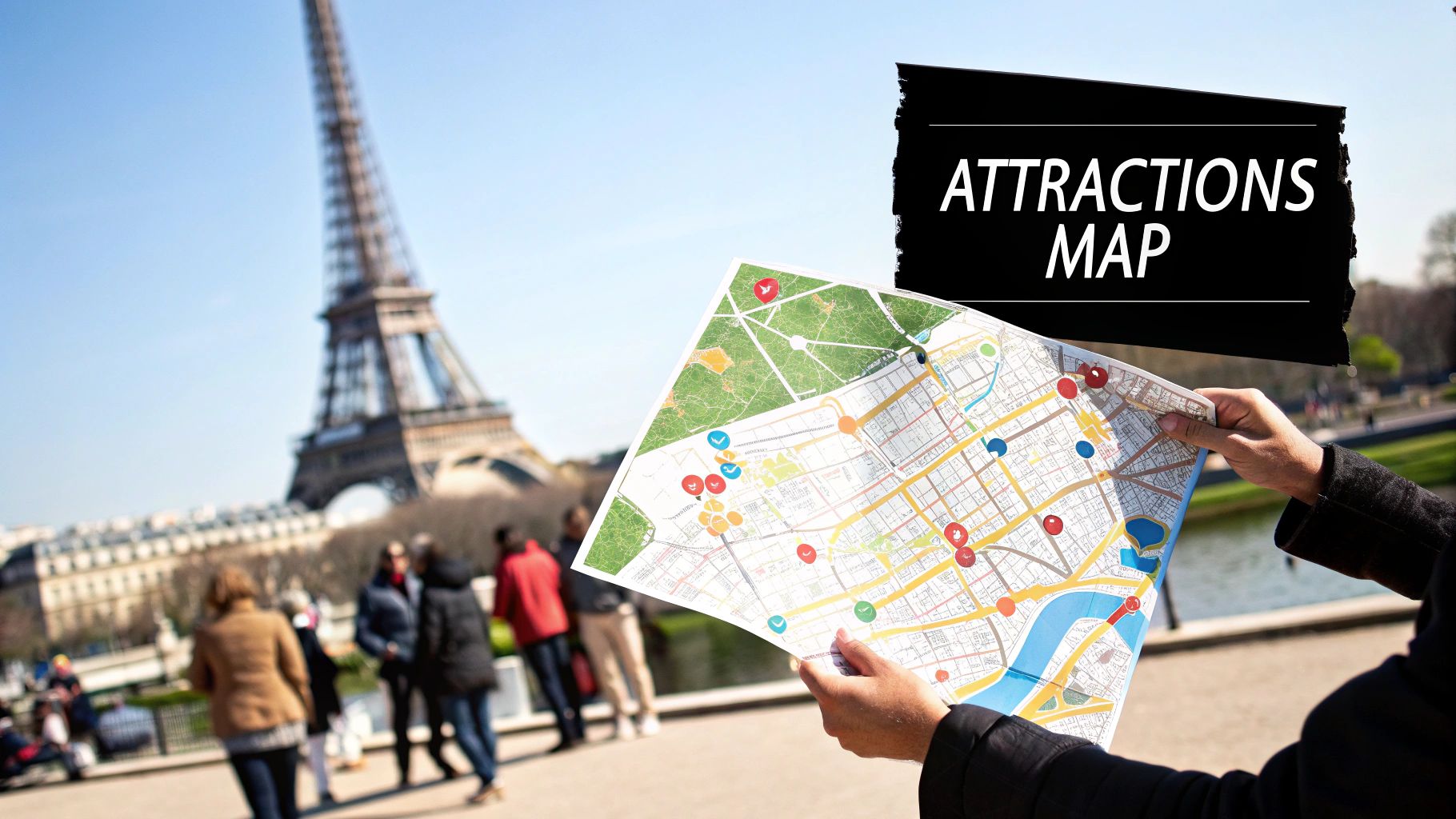
Getting around Paris, a city of over two million people, requires understanding its unique layout and using the right tools. A map showing Paris's different zones is essential for any visitor. Let's explore how to combine traditional navigation skills with modern tools to explore the city confidently, whether you're in the historic center or outer areas.
Mastering the Paris Map With Zones
A quality Paris map clearly shows the city's 20 arrondissements and extends to include Greater Paris. This visual guide helps you grasp the city's structure, plan efficient routes, and make sure you have proper transit tickets. For example, if you're heading from central Paris (zone 1) to Disneyland Paris (zone 5), you'll need different tickets than when traveling within the city center. The zone map also helps with choosing where to stay - you can weigh the convenience of a central location against the lower costs of outer zones.
Integrating Technology for Enhanced Exploration
While paper maps give you the big picture, digital tools offer real-time benefits. Apps like Citymapper or RATP show live transit updates, route options, and service disruptions. This means you can adjust your plans based on current conditions - if a metro line has delays, you can find alternative bus routes or walking paths. However, don't depend only on your phone. Learn the basic layout of Paris and your neighborhood using a physical map. This knowledge becomes valuable if your phone dies or loses signal.
Decoding Paris Street Numbering
Paris uses a logical but unique street numbering system that can puzzle first-time visitors. Streets have odd numbers on one side and even numbers on the other, increasing as you move away from the Seine River. Think of the Seine as a book's spine, with street numbers growing larger as you move outward. Understanding this system, along with your zone map, helps you quickly figure out where you are in relation to the river.
Choosing the Right Transit Options
Paris offers many ways to get around - metro, bus, RER, and Transilien suburban trains. Your best option depends on where you're going and what time it is. The metro works well for central Paris trips, while RER and Transilien trains are better for reaching outer zones and beyond the Périphérique ring road. For shorter trips or neighborhood exploration, walking or using Velib' bike-sharing lets you experience the city's character up close. You might be interested in: How to master some essential travel tips.
Avoiding Common Navigation Pitfalls
Even seasoned travelers can face challenges in a new city. In Paris, common mistakes include relying too much on phones, forgetting to validate transit tickets, and underestimating walking distances. Bring a portable charger, always validate your tickets when entering stations or buses, and use a step-counting app to track distances. These simple steps help ensure smoother travels around Paris.
Ready to experience the magic of Paris? Book your stay at BHP today and discover the city's charming streets, famous landmarks, and distinctive beauty. BHP - Your Parisian Boutique Hotel Awaits